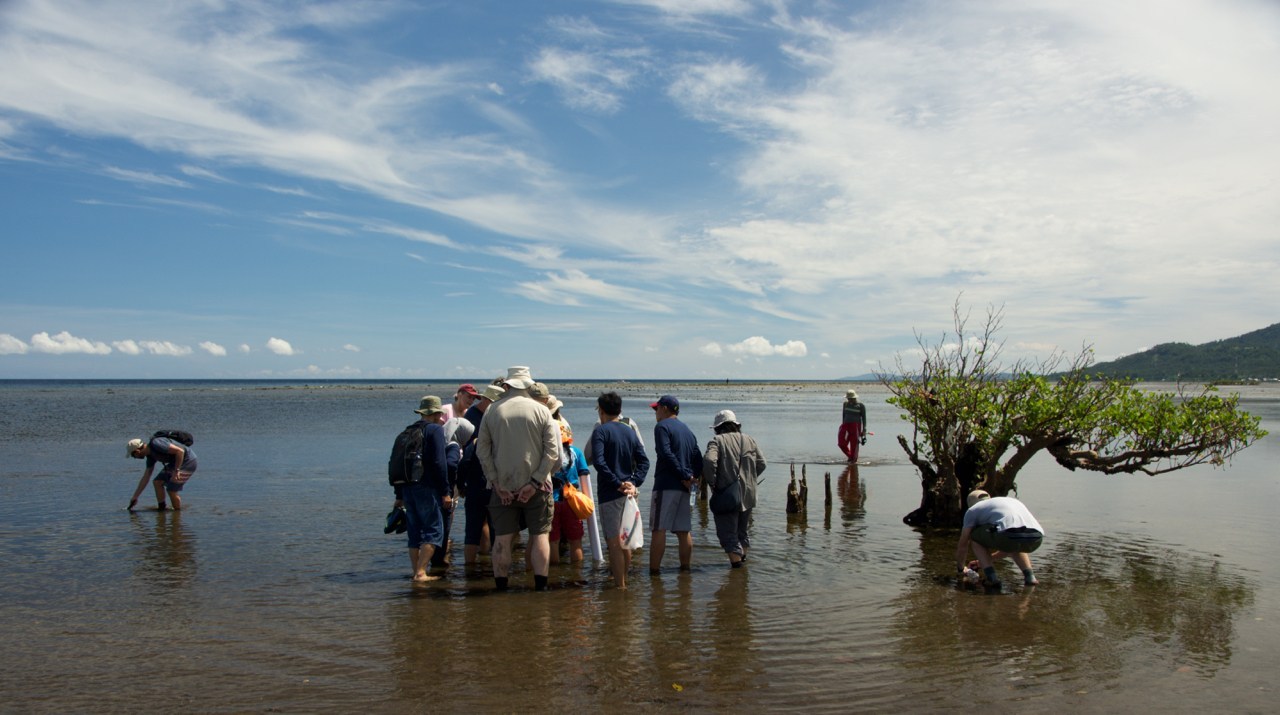Manado, Indonesia – September 2016
The 9th International Blue Carbon Scientific Working Group (IBCSWG) Meeting and the Indonesian Blue Carbon Science-Policy Dialogue were both held in Manado, Indonesia, September 26th – 29th, 2016. The primary goals of the IBCSWG was to 1) build awareness of blue carbon science and policy in Indonesia, and 2) exchange knowledge between scientists and policy makers to facilitate the inclusion of blue carbon ecosystems in the national climate change agenda. The Science-Policy Dialogue dedicated their time to sharing new scientific information as it relates to coastal land-use and climate mitigation and adaptation planning and decision-making processes.
9th International Blue Carbon Scientific Working Group Meeting
Main meeting overview.
Indonesian seagrasses. Current records of seagrasses extent are improving with the use of new aerial imagery, there is still more research to ground truth specific seagrass ecosystem factors: species composition, bed characteristics, substrate, depth, and hydrodynamic traits in relation to the carbon stock. A presentation on an updated literature review on the estimates of seagrass carbon storage revealed that seagrass beds are estimated to contain a total of approximately 368.5 Tg C in all of Indonesia’s seagrasses.
Indonesian mangrove ecosystems. A review of new and accurate methods to measure sediment deposition and its effects on carbon sequestration and wave attenuation were presented as well as the data-sharing efforts in a growing mangrove RSET-MH Network in the Indo-Pacific region.
Protection and restoration efforts. An exchange of ongoing and planned protection and restoration projects of blue carbon ecosystems allowed international and regional experts to learn from each other. The advantages of including blue carbon projects in marine protected areas were presented as well as novel cost-efficient methods and practices for restoration projects.
Blue Climate Initiative updates. Updates on the capacity building efforts of the Ocean Teacher global academy were presented. The Global Science and Data Network for Coastal Blue Carbon goals were showcased and it will support a comprehensive and quality controlled blue carbon data platform and support development of tools for data reduction, presentation, and modeling.
Science-policy linkages. Several updates relevant to facilitate blue carbon science to policy were presented during the meeting. The methodology for tidal wetland and seagrass conservation methodology is expected to be submitted for verification with the VCS by the end of 2016. The creation of the International Blue Carbon Partnership in 2015 aims to inform countries at the national level to facilitate integrating blue carbon ecosystems into their climate mitigation and land-use planning strategies. Two new documents will be developed as part of the new IPCC process, one that will require for estimating CO2 and CH4 emissions from flooded lands and a more detailed wetlands document will be prepared that integrates wetlands into the IPCC greenhouse gas accounting.
Indonesian Blue Carbon Science-Policy Dialogue. A special session successfully brought together the International Blue Carbon Scientific Working Group members together with representatives from relevant government ministries to discuss Indonesian’s opportunities and challenges related to coastal blue carbon. Primarily it was concluded that concerted efforts among stakeholders and law enforcement are urgently needed to mainstream blue carbon in the policy processes. Additionally, since coastal wetland ecosystems are part of Indonesia’s National Determined Contribution (NDC) more scientific information on coastal blue carbon is urgently needed to support reporting efforts.
For more information please read our final workshop report (see below for link to documents).


